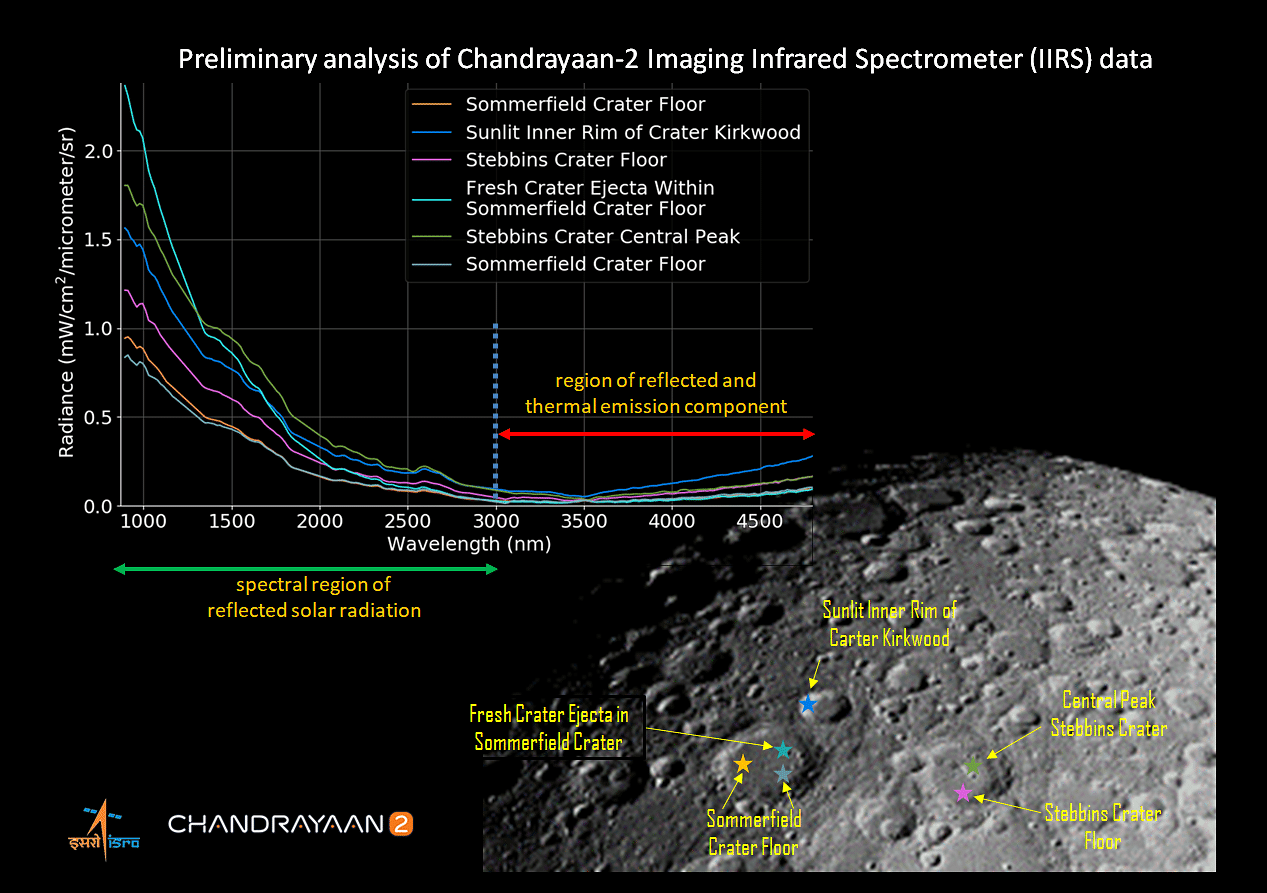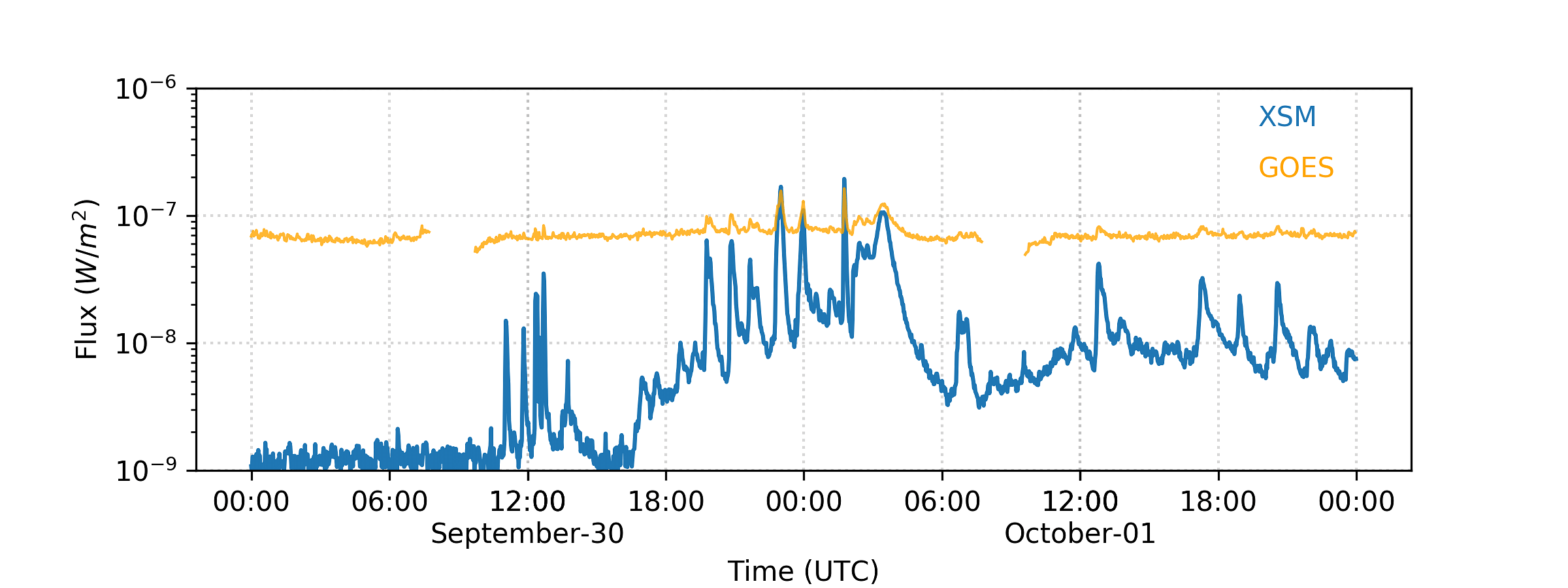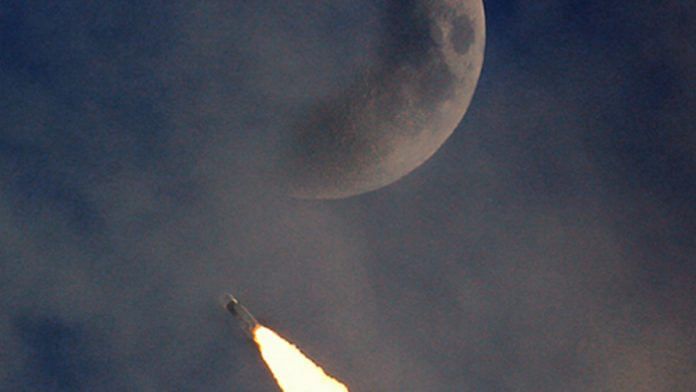Bengaluru: The Indian Space Research Organisation (ISRO) hasn’t said anything about the Chandrayaan-2’s lost Vikram lander yet, but the agency has released details of the initial observations made by two payloads on the spacecraft’s orbiter.
The latest bit of information from ISRO is about data captured by the orbiter’s infrared imager called the Imaging Infrared Spectrometer (IIRS), which is built to perform mineralogical mapping of the moon. IIRS gathers data by measuring sunlight reflected off the lunar surface and splitting it into different spectral bands.
It will also analyse water ice found under the moon’s surface, inside craters and other parts of the lunar surface, that are under permanent shadows. It will look for signs of both H20 as well as hydroxyl (OH).
The statement released by ISRO said the first illuminated image of the moon’s surface was obtained by IIRS, of the northern hemisphere on the far side. Prominent craters, namely Sommerfield, Stebbins, and Kirkwood, are visible in the images.

More observations by Chandrayaan-2
Another similar instrument on the orbiter is the Dual Frequency Synthetic Aperture Radar (DFSAR). It will also perform lunar mapping while measuring the thickness of the moon’s crust. DFSAR will calculate how thick the regolith is, the quantity of water ice at different spots on the lunar surface and measure the thickness of ice layers.
Last week, ISRO had released another statement about a solar flare that was observed by the X-ray Solar Monitor (XSM) onboard the orbiter. This instrument observes the sun’s corona and measures x-rays from it.
The sun has a solar cycle spanning 11 years during which its magnetic field goes from a solar maxima to a solar minima, with the poles flipping at the end of each cycle. During the cycle, solar radiation, flares, sunspots and other phenomena from the sun fluctuate, increasing and decreasing in intensity and frequency. This also affects space weather in the solar system, impacting satellites, spacecraft and astronomy near the earth.
The sun is currently in Solar Cycle 24, which has been predicted to end sometime beginning earlier this year and by the end of next year. It is currently in a solar minima with a relatively ’silent’ sun. A series of x-ray flares were observed by XSM between 30 September at 05:30 IST and 2 October 05:29 IST.

isro.gov.in
Working in conjunction with XSM is also the Chandrayaan-2’s Large Area Soft X-ray Spectrometer (CLASS), which simultaneously measures emitted x-rays from regolith elements like silicon, iron and magnesium when these are activated by the sun’s rays.
There are four other payloads on the orbiter. The Orbiter High-Resolution Camera (OHRC) photographs the same location twice on different orbits and from different angles, creating digital elevated models of the lunar terrain. This is the highest resolution camera currently orbiting the moon and had captured the first images of Vikram’s landing site. It had also imaged the moon in early September.
The Terrain Mapping Camera (TMC2) will map the entire lunar surface in 3D resolution. Both these cameras help boost preparations for future missions.
The Chandrayaan-2’s Atmospheric Compositional Explorer 2 (CHACE-2) will continue the work of CHACE-1 — which was present on Chandrayaan-1’s Moon Impact Probe (MIP) that was purposely crashed on the lunar surface and had studied the composition of the wispy lunar exosphere. The Dual Frequency Radio Science (DFRS) experiment will study the evolution of electrons in the ionosphere of the moon by transmitting radio signals.
Also read: All you want to know about the future of crashed Chandrayaan-2 lander Vikram






